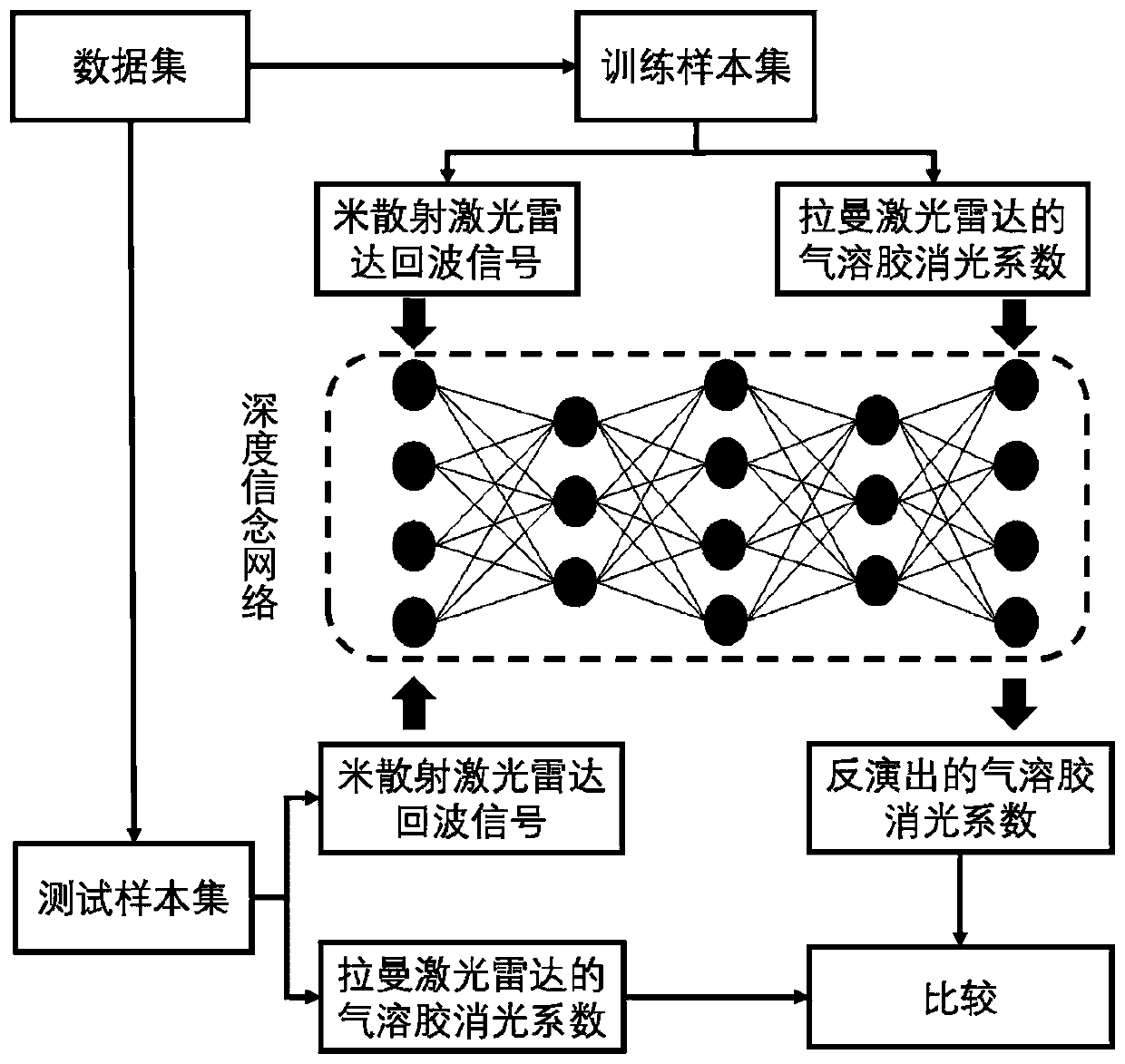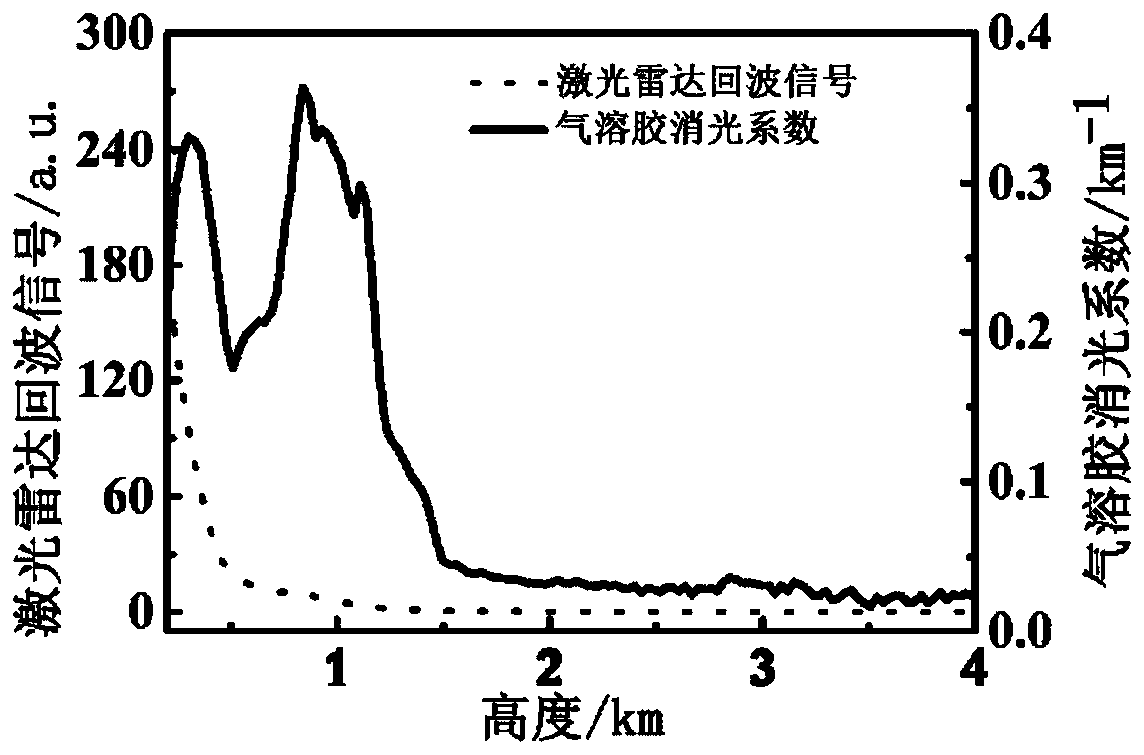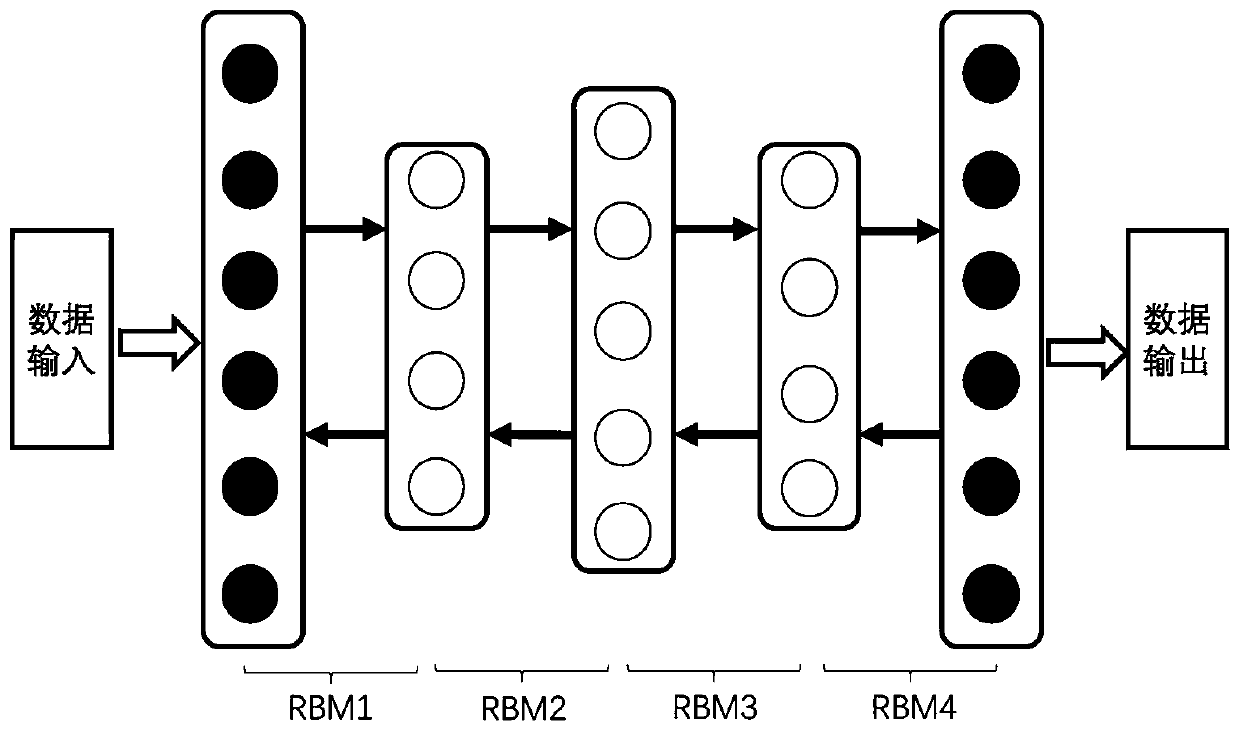Aerosol extinction coefficient inversion method based on deep belief network
A technology of deep belief network and extinction coefficient, applied in neural learning methods, biological neural network models, reradiation of electromagnetic waves, etc., can solve problems such as large inversion errors
- Summary
- Abstract
- Description
- Claims
- Application Information
AI Technical Summary
Problems solved by technology
Method used
Image
Examples
Embodiment Construction
[0061] The technical solutions of the present invention will be further described below in conjunction with the accompanying drawings and embodiments.
[0062] An aerosol extinction coefficient inversion method based on a deep belief network according to the present invention, combined with the measurement results of the meter scattering lidar and the inversion results of the Raman scattering lidar, proposes an aerosol extinction method based on the deep belief network Coefficient inversion method. The structure principle of the inversion method is as follows: figure 1 shown.
[0063] An aerosol extinction coefficient inversion method based on a deep belief network according to the present invention comprises the following steps:
[0064] Step 1: Obtain the echo power signal of the meter scattering lidar and the aerosol extinction coefficient obtained by the inversion of the Raman lidar to form a data sample set; divide the data sample set into a training sample set and a te...
PUM
 Login to View More
Login to View More Abstract
Description
Claims
Application Information
 Login to View More
Login to View More - R&D
- Intellectual Property
- Life Sciences
- Materials
- Tech Scout
- Unparalleled Data Quality
- Higher Quality Content
- 60% Fewer Hallucinations
Browse by: Latest US Patents, China's latest patents, Technical Efficacy Thesaurus, Application Domain, Technology Topic, Popular Technical Reports.
© 2025 PatSnap. All rights reserved.Legal|Privacy policy|Modern Slavery Act Transparency Statement|Sitemap|About US| Contact US: help@patsnap.com



